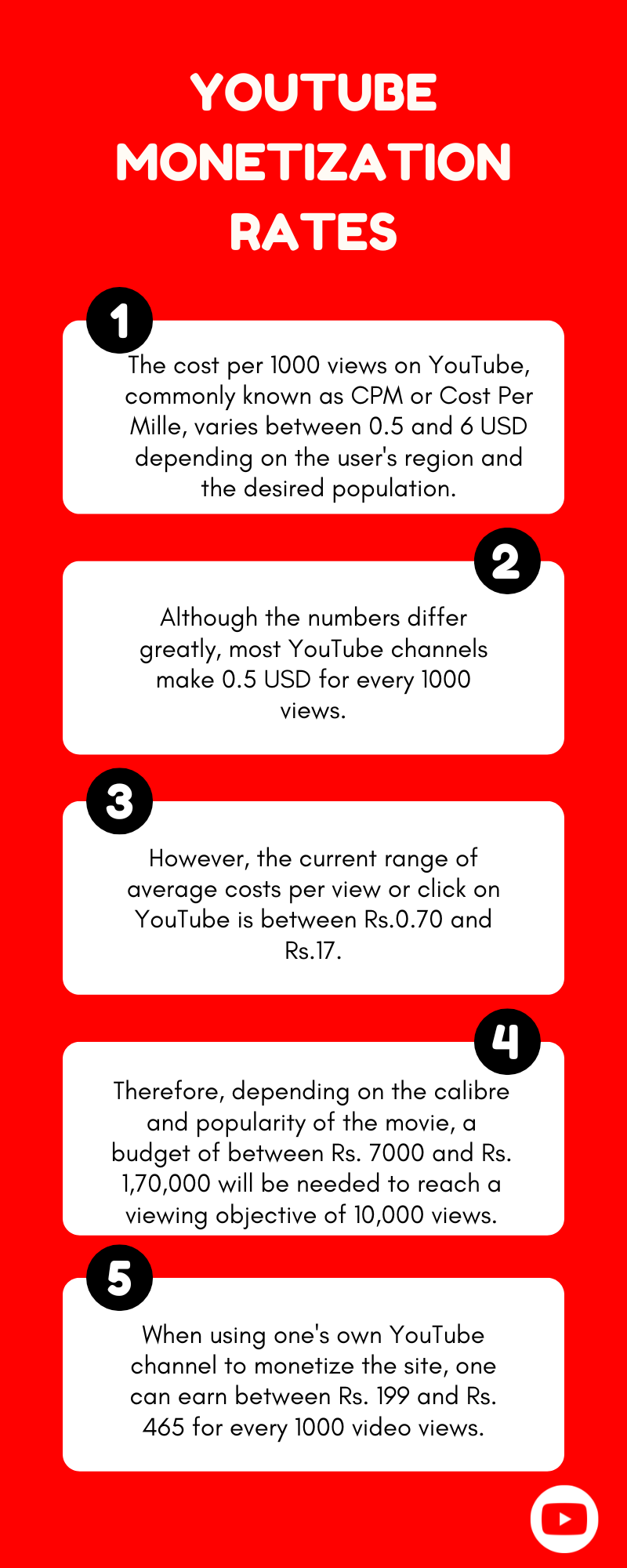For both professionals and beginners, YouTube is a very popular internet streaming medium. It’s also a great way to make money when you know how to use it. Don’t you want to become the next big thing on YouTube? Or maybe you’re just interested in finding out how to make some extra money. The people who produce material for YouTube’s different markets, including instructional, entertaining, and inspirational, are known as creators.
The people who produce material for YouTube’s different markets, including instructional, entertaining, and inspirational, are known as creators. The one-of-a-kind YouTube monetization policy also enables creators to make money directly from the platform in a number of ways, such as subscriptions, placed advertising, and product sales.
If you’re here, you’ve made a perfect choice. Ever wanted to learn how to use YouTube for personal gain? The very profitable subject of YouTube monetization is covered in-depth in this essay, along with its definition, prerequisites, and a host of other topics.
What is the monetization of a YouTube channel?
The term “YouTube monetization” describes your ability to make money from the content you are producing on the site. You must have 4,000 watch hours and at least 1,000 subscribers in the last 12 months to be eligible for YouTube’s monetization program.
Keep in mind that there is no difference between content and YouTube material—this is a fundamental principle that applies to all elements. To earn money on YouTube, you must first create excellent content that your audience will value and be willing to pay for. To do this, you must make amazing videos that will attract a large number of viewers and subscribers, which will result in a steady flow of income.

YT Monetization Rates
YouTube Monetization Rates
The cost per 1000 views on YouTube, commonly known as CPM or Cost Per Mille, varies between 0.5 and 6 USD depending on the user’s region and the desired population. Although the numbers differ greatly, most YouTube channels make 0.5 USD for every 1000 views. The advertiser has the option to choose a minimum budget for YouTube advertisements. However, the current range of average costs per view or click on YouTube is between Rs.0.70 and Rs.17. Therefore, depending on the calibre and popularity of the movie, a budget of between Rs. 7000 and Rs. 1,70,000 will be needed to reach a viewing objective of 10,000 views. When using one’s own YouTube channel to monetize the site, one can earn between Rs. 199 and Rs. 465 for every 1000 video views. You can only have an Ad-Words account for your YouTube channel if you have at least one video with 5000 views and want to display advertising on your YouTube videos and monetize your channel with Ad-Words. Additionally, all sides of the advertising table must consent before any advertisements are shown alongside or on your movies.
Over the years, YouTube’s advertising rates have fluctuated. However, the price of YouTube advertising has essentially gone up due to the present growth in interest in video content. However, because of the enormous returns, the ensuing CPM and CPC are considerably decreased, making the budget and related expenses worth the cost. But whether or not a brand will benefit from YouTube advertising will also rely on how “viral” that video becomes and how good it is. In a similar line, YouTube monetization has begun to bring about bigger rewards for account users.
Creators on YouTube have access to additional tools and revenue opportunities thanks to the YouTube Partner Program (YPP). Additionally, it enables income sharing for commercials that are aired alongside your content. Producers now have more tools and YouTube monetization alternatives thanks to the YouTube Partner Program (YPP). Additionally, it allows for the revenue-sharing of broadcast commercials for your content. A share of the advertising revenue is distributed to creators who meet certain criteria by the YPP. It’s somewhat of a revenue-sharing arrangement, so when a creator allows commercials on their YouTube videos and viewers click on the ads, YouTube and the artist split the earnings. Right now, the author gets to keep 45% of the overall ad money, while YouTube keeps the other 55%.
